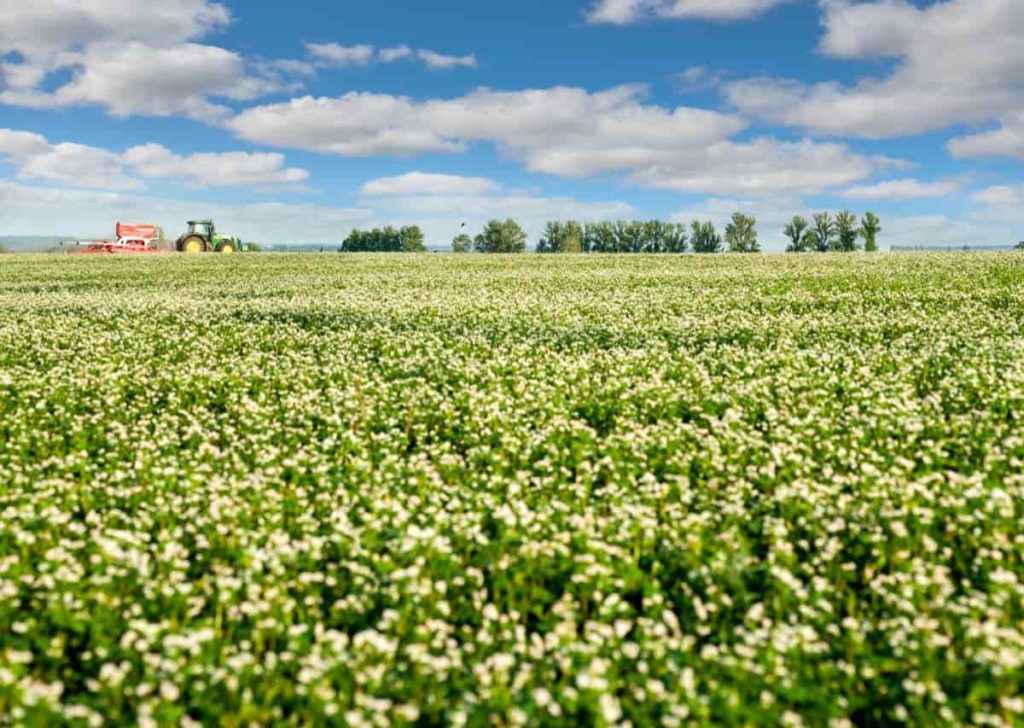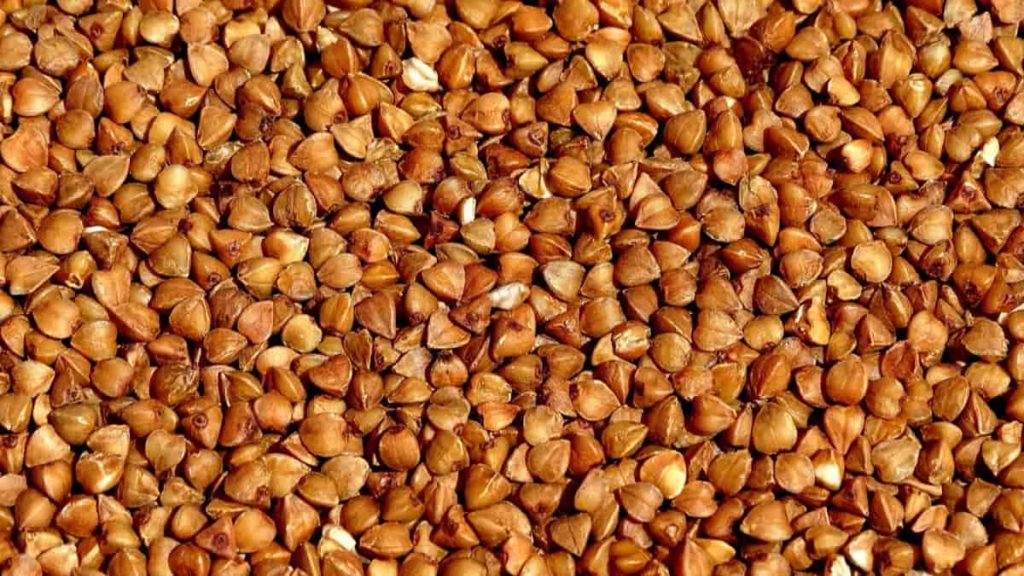Are you thinking of leaving the busy city for a peaceful and tranquil farm life? However, do you know where to start? If this is your first time as a farmer, it would be best to learn which crops are easy to grow and harvest. Also, it’s good to consider the plants that can provide income and, in this case, try to consider planting buckwheat. Buckwheat is warm-loving flowering grass from the Polygonaceae family and one of the easiest seeds to grow. It can grow to any kind of soil, whether it’s rich in nutrients or not. If you’re living a healthy lifestyle, you might have encountered this grain-like seed.

Also, if you think you can make money with buckwheat, well, the answer is a big yes. Buckwheat is used all over the world by many cultures. If you’re familiar with the famous soba noodles, the flour used to make those noodles is from buckwheat. And check your pillows because you might have no idea that they are filled with buckwheat hulls. Are you convinced? Here are the basic guide questions to teach you buckwheat farming effectively.
What are the soil requirements for Buckwheat?
As mentioned above, buckwheat seeds can thrive and adapt to any kind of soil. However, if you want them to grow beautiful, healthy, and identical, consider using good soil filled with nutrients and essential compounds for them. Buckwheat grows well on moderately fertilized and well-maintained soil. Also, it’s good to note that buckwheat can’t tolerate poor conditions, such as flooding and drought, and its roots expand quickly but can’t perform well on compact soil.
Moreover, buckwheat is among the crops that can tolerate high-acid soil as low as 4.8. And it grows well moderately textured and well-drained soils, such as silt loam, sandy loam, and loam. Also, it doesn’t grow well in areas with a high concentration of limestone and nitrogen. These may cause lodging, and it’s impossible to move it back to its original position.
In addition, buckwheat can still grow even if you have no fertilizer to support them. However, the crops you may harvest are not as good as those with fertilizer—just a helpful reminder to be careful when placing fertilizers. Putting too much may kill them due to chemical burn.

What are the different types of Buckwheat?
When planning to grow buckwheat, it’s best to know which type you want to harvest. There are two types of buckwheat you can choose from: common and Tartary. The main difference between these two is how they are being utilized worldwide. As the name suggests, common buckwheat is used in many dishes around the world, while Tartary buckwheat is primarily served in traditional food in relatively limited regions. So, when you purchase a buckwheat seed or any product made from buckwheat, it’s most likely the common type.
How much water does Buckwheat need?
Buckwheat grows well on soils that can hold and drain moisture properly. So, be careful when watering them, as too much water may affect the seed negatively in terms of moisture retention and weight. Also, overwatering may cause the plant to rot easily.
What are the growth habits of Buckwheat?
Unlike most crops, buckwheat has no established and defined growth habits, meaning it can grow whenever it feels. Also, it produces relatively stable yields, which is good for the farming industry.

What is the timeline of Buckwheat?
Unlike other plants, buckwheat flowers as fast as four weeks and produce grain as soon as 10 to 12 weeks or 70 to 90 days, making it one of the strongest spring crops. Also, it’s best to plant buckwheat during summer until mid-August. However, if you plan to use buckwheat as a cover crop or soil improver, you may plant it during early summer or late spring and turn it into mulch for your next crop.
What are site requirements for Buckwheat farming?
Since buckwheat has a shallow and fine root system, investing in a good seedbed would be a good option. Also, you need to prepare the ground at least a month in advance when the soil is manageable and rich in moisture for abundant crop growth. In addition, you may consider creating around the drainage.
It will help prevent the seed from rotting due to the excessive moisture that collects around it. Also, overwatered seedbeds will prevent the roots from growing properly. And don’t try disking because it can only worsen the root problems and affect the plant’s entire growth.

what are the climate requirements for Buckwheat?
Buckwheat grows perfectly in a cool and moist climate. In addition, you can grow it in places with high altitudes where the warm climate is low and the growing time is short. Moreover, it’s good to note that buckwheat can’t tolerate and may die in extreme weather conditions, especially when it comes to freezing temperatures. Also, hot climates and dry seasons may prevent seed formation, and the flowers produced may be deformed.
Because of these conditions, it would be best to time your seeding period and check the environment’s temperature. When it comes to timing, it’s advisable to plant buckwheat when dry and hot weather is over or three months before the first frost in the fall. Furthermore, the perfect temperature for growing buckwheat is 21C, but it can grow as cold as 10C. Therefore, planting buckwheat during the early days of spring may not be ideal.
How would you know if Buckwheat is ready for harvest?
You’ll know when buckwheat is ready to harvest if the grains are mature while the plant is still green. Usually, this is around eight to ten weeks, and during this period, the seed turns brown, and the grain is ripened. If you own a farm, swathing, and windrowing are best for harvesting a large field of buckwheat. But if you’re a garden owner, threshing will do. When it comes to yield computation, a hectare of buckwheat may produce 2,200 to 2,700 pounds.
Final words
Among other plants, buckwheat is one of the easiest to grow. It can grow in any soil type but don’t forget the best soil conditions if you want your buckwheat to grow well. When looking for good soil, check its pH, water-holding capacity, and drainage ability. Also, it doesn’t need special treatment like other plants, but you must consider the temperature and time conditions. Never plant buckwheat during early spring or early fall, and avoid hot weather climates.

And most importantly, buckwheat is a good opportunity to create an additional source of income. It’s easy to harvest and grows faster than any other crop. However, only a small number of farmers invest in buckwheat farming. Maybe this is the right time to invest and earn more with buckwheat farming.
- Crops Grown in Summer Season: Best Choices for Summer Gardening
- Organic Pest Control for Tomato Farming
- How to Maximize Sheep Farming Profit
- Broccoli Varieties: Choosing the Right Cultivars for Your Farm
- How to Raise Pigs in Your Own Backyard: A Comprehensive Guide
- Budget Friendly Sheep Shed Ideas: Cheap and Low-Cost Tips
- How Much Do Cattle Farmers Make: Revenue Streams in Cattle Farming
- Management Pests and Diseases in Your Cotton Field
- Sheep Farming Business Plan for Beginners
- Aquaponic Farming at Home: A Step-By-Step Guide
- Profitable Village Farming Business Ideas in 2024
- High-Yield Aquaculture: Fast-Growing Fish for Farming
- Effective Fish Pond Construction Techniques for Beginners
- Irrigation and Water Management in Pineapple Farming
- Blossom to Harvest: Mastering Flowering and Pollination in Papaya Farming
- Pig Fattening Essentials: From Selection to Sale for Beginners
- Raising Wagyu Cattle: A Complete Guide for Premium Beef Production
- Soil Types and Their Water Holding Capacity
- Optimizing Irrigation Schedules for Coconut Groves for Enhanced Yield
- Espresso Your Garden: Coffee Grounds for Healthier Acid-Loving Plants
- The Best Soil Mix for Snake Plants: How to Mix Your Own Snake Plant Soil
- Green Thumb Success: Expert Tips for Cultivating Greenhouse Beans All Year Round
- Bloom All Year Round: The Ultimate Guide to Indoor Hyacinth Care
- Eco-Friendly Gardening: How to Make Liquid Fertilizer from Kitchen Waste
- Ultimate Guide to Grow Anise in Pots: Explore Seed Propagation to Harvesting
- Guide to Raising Chester White Pigs: Discover Breed Facts to Growth Management
- Mastering the Elegance: The Ultimate Guide to Weeping Cherry Tree Care, Planting, and Maintenance
- Ultimate Guide to Planting Garlic in Grow Bags: Growing Strategies for Beginners
- How to Fix Spider Plant Leaf-Related Problems: Natural and Organic Remedies
- 10 Reasons Why Your Tulsi Plant is Shedding Leaves: Home Remedies and Solutions
- Optimizing Growth and Yield: The Advantages of Palm Bunch Ash Fertilizer
- Utilizing Neem Oil Extract as a Natural Pesticide for Hydrangea
- From Soil to Harvest: Various Ways in Which Farmers Can Use AI Tools
- Steps to Encourage and Induce Citrus Flowers: A Comprehensive Guide
- How to Fix Snake Plant Leaf-Related Issues: Natural and Organic Remedies
- Transform Your Garden into a Fragrant Oasis with Raat Ki Rani (Night Blooming Jasmine)
